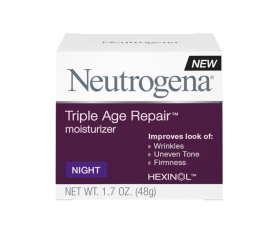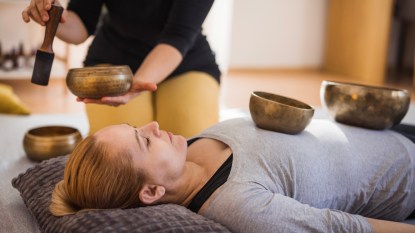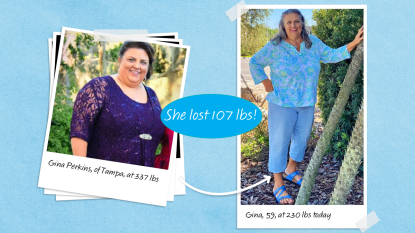Exercise Snacks Are the Secret to Healthy – And You Only Need 1 Minute to Get the Perks!
Learn how they can help you experience less pain, more energy and a reduced risk of illness
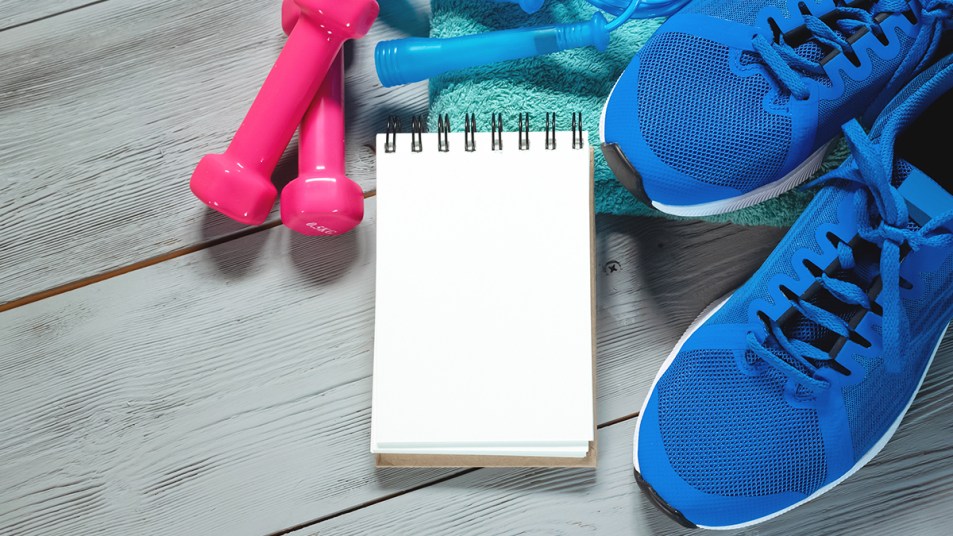
For some of us, finding the time and energy to fit in a workout can feel impossible. For others, the idea of heading to the gym is intimidating and overwhelming. Regardless of which camp you fall into, we’re living increasingly sedentary lives, increasing our risk for a host of health issues. But what if you only needed to take a one-minute break to get your fitness in check? With exercise snacks, you can do exactly that. The brief bouts of movement are study-proven to enhance our health in just a few short minutes each day. So whether you’re marching in place besides your desk or running up the stairs post-bathroom break, exercise snacks can majorly improve your health with minor effort. Keep reading to discover how.
What are exercise snacks?

“Exercise snacks are brief, vigorous bursts of exercise that you do sporadically throughout the day,” explains Jonathan Little, PhD, a leading researcher in exercise, metabolism and health and a professor at the University of British Columbia. Depending on your starting fitness level, that could be marching in place for a minute, doing 20 squats or running up a flight or two of stairs. Whatever movement gets your heart rate up and makes you breathe a little heavier will do the trick! “The idea is that you don’t have to plan to go to the gym, you don’t have to get changed, you don’t have to think too much about what program you’re following. You just break up your day with these little bursts of exercise.”
Related: Fitness Experts Reveal the Best Time to Work Out + Easy Hacks That Boost the Benefit of Any Exercise
How sedentary lifestyles harm our health
We’re spending an increasing amount of time sitting and a lot less time moving these days. According to research from the American College of Sports Medicine, adults report an average of 9.5 sedentary hours each day. “We live in a world where it’s easy to just sit there on our computers or on our phones,” explains Gabrielle Lyon, DO, a board-certified family physician and author of the New York Times bestseller Forever Strong. She notes that it’s not just sitting that’s an issue, but also overall lack of activity that drives health-hampering inflammation. The average American only takes about 3,000 to 4,000 steps per day. “That’s not how the body was designed.”
The good news is that, with exercise snacks, we don’t need long, arduous trips to the gym to see healthy results. In fact, studies show that just 15 to 20 minutes of vigorous, equipment-free activity each week can have impressive impacts on our overall health. So not only are you saving time, but you’ll save money on the gym membership, too!
What are the health benefits of exercise snacks?
Dr. Little and other researchers are exploring the potential health benefits of exercise snacks in their studies – and the results are promising! Keep scrolling for the study-backed benefits of incorporating exercise snacks into your day.
Exercise snacks improve heart health
Getting your blood pumping — even for just a minute or two — can have major impacts on your heart health. In one study from Tulane University, subjects who climbed about 5 flights of stairs each day reduced their cardiovascular disease risk by 20%. And for adults over 85, 10 minutes of walking is proven to lower the risk of cardiovascular death by 39%. Studies show that this type of movement can also reduce bad “LDL” cholesterol, blood pressure and triglycerides – all key drivers of heart disease. (Walking also helps burn fat – even if you do it slowly!)
But don’t we need long, sweaty cardio sessions to keep our ticker in tip-top shape? Not necessarily. “If you make your cardiovascular system work hard, it tends to adapt,” explains Dr. Little. “We think that having your heart rate in that vigorous zone for as little as a minute is enough to gain some adaptations, particularly if you’re unfit.” Among those potential adaptations? Enhanced flow of healing, nutrient-rich blood throughout the body, stronger contractions of heart muscles that keep blood pumping and improved delivery of oxygen to muscles.
Exercise snacks stabilize blood sugar
Exercise snacks are a particularly good option for those with type 2 diabetes. “When you’re moving your muscles, you don’t require insulin,” explains Dr. Lyon. Instead, your muscles soak up the glucose from whatever you’ve eaten to keep you moving. In fact, when people broke up sitting every 30 minutes with a 5-minute stroll, they had 58% lower blood sugar spikes after eating a large meal. Another similar study had subjects do 3 minutes of any type of movement every 30 minutes had similar results. Subjects experienced fewer and less severe spikes and dips in their blood sugar following an exercise snack.
Related: Try This Quick Sit to Stand Fitness Test + See What the Results Say About Your Longevity
Exercise snacks ease pain
When you’re dealing with incessant aches and pains, moving may be one of the last things you want to do. But a small tweak to your day-to-day, like saying “No thanks!” to the elevator, can help build up strength and flexibility. Dr. Lyon, an expert on skeletal muscle, explains, “Inactivity makes skeletal muscle less efficient, less healthy and less effective.” And, according to research in Gerontology and Geriatric Medicine, low skeletal muscle is a major driver behind chronic pain. Thankfully, Dr. Lyon says exercise snacks or any type of movement throughout the day sensitizes muscle tissue. This helps the body use the fuel that’s stored there and builds strength over time.
Muscle makes us strong, limber and mobile, but it’s also key for keeping aches and pains at bay. That’s why climbing a few more stairs each week can make a huge difference in your pain. Researchers in PLOS One found that women who climbed about 61 flights of stairs weekly noted significantly less low back pain than those who climbed about 35 flights each week. That’s a difference of just 26 flights, or a measly three or four extra flights each day. To double up on heart-healthy benefits, Dr. Little suggests running up those stairs as quickly as you safely can.
Exercise snacks improve focus
When we move, our body can more efficiently shuttle oxygen- and nutrient-rich blood to the brain. If you often hit an afternoon slump that has your eyes shutting as you work, considering getting up for a minute. That’s how long subjects in a study published in the Journal of Applied Physiology needed to boost focus. Compared to subjects who sat for three hours, those who did one minute of squats at 20-minute intervals had better executive function. Not only does that mean they could think straight, but their planning, memory and ability to multitask all improved. And they reported less mental fatigue, helping them clear their to-dos without needing a nap.
Exercise snacks lower cancer risk
It’s well known that taking care of your health – including your physical fitness – can lower your risk for a variety of types of cancer. And when researchers in the journal JAMA Oncology put exercise snacks to the test and had otherwise sedentary study subjects incorporate just four to five minutes of total movement daily, they lowered their overall cancer risk by 18%. Plus, risks for cancers that have been linked to physical activity – like breast, endometrial and colon cancers – dropped as much as 32%. And everyday activities like carrying heavy groceries counted toward their total movement. Dr. Lyon notes that this and other weight-bearing activity, like walking with a weighted vest, can be great exercise snacks to incorporate.
Who should try exercise snacks?
Exercise snacks are an excellent way for anyone to incorporate more movement into their day. Dr. Little notes that office workers or folks who sit often can see a major benefit. Further, Dr. Lyon says older adults, who lose muscle at a faster rate, can also benefit. Weight-bearing exercises like pushups and squats stimulate strong muscle fibers that are key for warding off frailty.
Before you pick out the best exercise snacks for you, consider your baseline level of fitness. “If you’re a marathon runner, marching on the spot for 60 seconds is not going to get your heart rate up,” explains Dr. Little. Test out a few different activities to see what gets you huffing and puffing and what doesn’t. (Consider rucking, a trendy spin on walking!)
Dr. Little also notes that exercise snacks aren’t a replacement for regular exercise, and there are benefits to longer sweat-sessions. But on particularly busy days they can help you keep fitness up. And for those new to exercising, exercise snacks can be a good first step to build up fitness.
How to do exercise snacks
The most vital component of exercise snacks is making sure whatever you’re doing gets your heart rate up. “This is going to be beneficial as long as you can get yourself into that huffing and puffing zone,” says Dr. Little. He also recommends trying to engage as much muscle mass as possible. “For example, don’t do squats with your arms at your sides. As you do the squat, thrust your arms over your head at the same time. Then you’re engaging your upper body as well.”
Varying your movements is also important. “There are benefits of moving in full range of motion,” explains Dr. Lyon. “Not just moving forward and backward, but sideways and in rotation.” So if you jog up the stairs at 11 am, switch it up with some side lunges after lunch.
How to incorporate exercise snacks into your routine
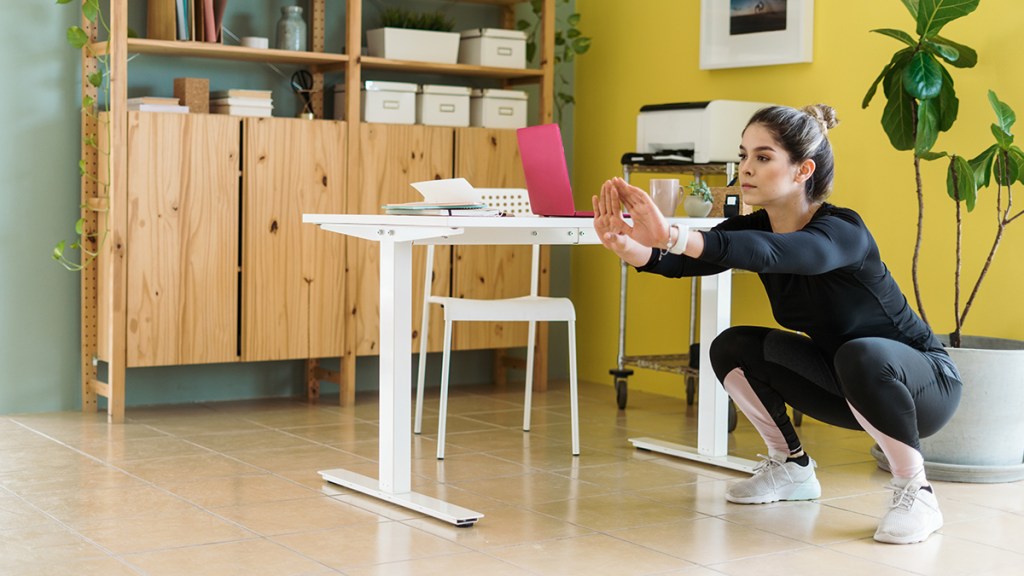
Just three 60-second bouts throughout the day can improve health. But for optimal outcomes, Dr. Little suggests doing four to five sessions throughout the day. That’s just five minutes of movement daily!
Try bodyweight squats, jogging up stairs, marching in place or doing lunges. If these exercises feel too easy for you, consider adding a weighted vest or holding hand weights or a kettlebell. (Planks work too – and they’re a great way to test your physical fitness!)
Stacking your exercise snacks with other habits can also help you remember to move. When you brush your teeth, try marching in place, and repeat every time you brush your teeth. Habit stacking – attaching new habits to ones you already do instead of making a new routine for the new habit – is study proven to be effective for introducing new habits.
Check out this video for exercise snacks you can try while putting clothes away, making dinner and more:
You can set an alarm on your phone for every hour to remind you to move, suggests Dr. Lyon. Or use fitness trackers like an Apple Watch to remind you to move every hour. Or consider trying an app like Get Moving, which sets reminders at intervals and suggests exercises, or Break Time, which gives you a nudge to move.
This content is not a substitute for professional medical advice or diagnosis. Always consult your physician before pursuing any treatment plan.
For more ways to improve fitness, check out these stories:
Fascia Exercises Are the 10-Minute Routine Helping Women Get One Size Smaller — Fast!
Try This 30-Second Plank Test + See How the Results Can Help You Get Stronger
Try This Quick Sit to Stand Fitness Test + See What the Results Say About Your Longevity
Get In Shape At Home With The 9 Best Workout Equipment Finds From QVC

